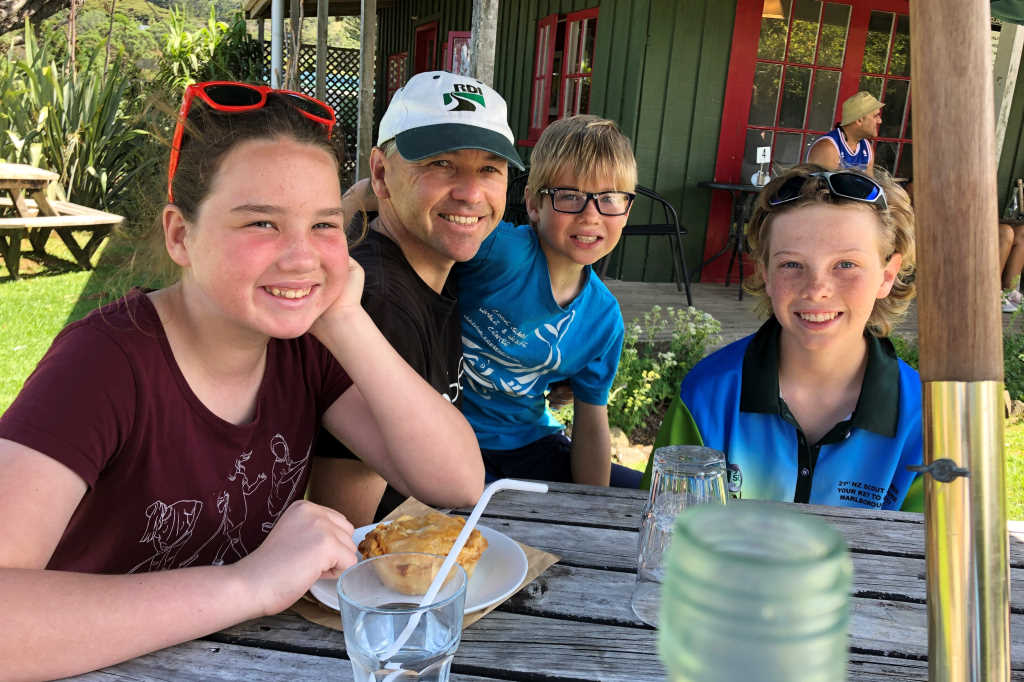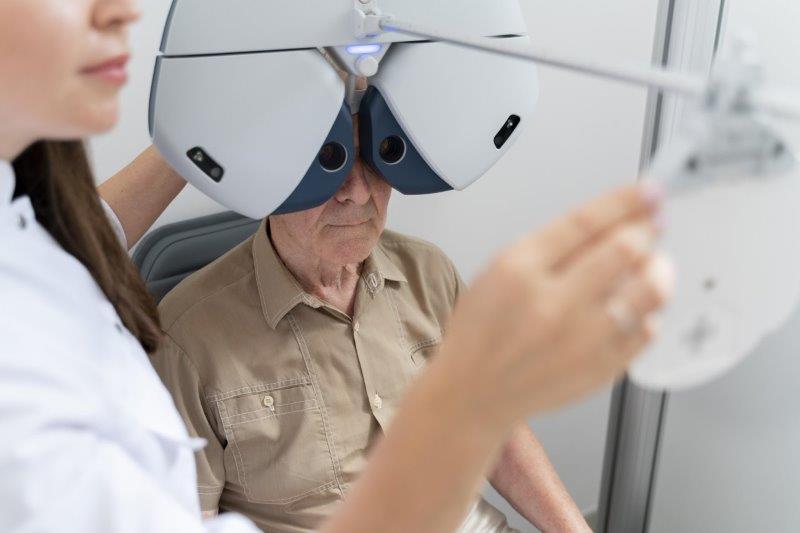High myopes needn’t suffer
Historically seen as an inconvenience, myopia is now considered an epidemic, and the risk of serious conditions like retinal detachment is well-understood. We talk to one parent, Northland GP Scott Davidson, who decided to take action.
In a bid to better serve the sleepy Northland community of Dargaville, GP Dr Scott Davidson began broadening his medical skills and knowledge and discovered he had a passion for ophthalmology. This meant that when his own son, Sam, was diagnosed with myopia about a year ago, Davidson was well prepared for discussing the treatment options.
“Rebecca took Sam to a concert and he was squinting at the stage,” says Davidson. “He admitted to us he’d had to squint to see distances for a while. After checking his visual acuity in my own surgery, we took him to a local optometrist and he was diagnosed with myopia. His vision was about -2.”
Davidson wasn’t worried, his wife Rebecca had been a high myope since she was a child and he also wore glasses for near-sightedness. However, he was keen to talk about more than just glasses.
“I was aware that myopia in children could develop into high myopia in adults and that this came with a set of associated risks,” he explains. “High myopes are more likely to suffer detached retina or macular degeneration. I see these people in my surgery and I see the impact on their lives. I knew that atropine and ortho-k could slow the progression of myopia and I wanted to investigate.”
However, the first hurdle was finding an optometrist who was interested. Davidson’s local practice did not prescribe atropine or get involved in ortho-k.
“He said he found kids didn’t tolerate the contact lenses well and there was a high dropout rate. I was disappointed, but we had gone in expecting to get glasses and that’s what we did. Sam was happy with the frames he chose. He had no issue wearing them.”
Even so, Davidson prescribed his son low dose of atropine and began investigating ortho-k further. He discovered that Rob Allan at Lowes and Partners Optometrists in Whangarei worked with ortho-k.
“We made an appointment and I discussed it with Sam in advance, so he knew what to expect and what we were taking about,” says Davidson. “At Rob’s practice, he taught Sam how to put the lenses in. We talked about how he would need to wear them every night and asked him if he thought he could do that. He said ‘yes’, he wanted to give it a go.”
Even so, Sam still needed some coaching to start with. “He did find putting the lenses in quite complex at first, then a bit of a chore at night when he was tired. But Rob has a great bedside manner and Sam is very independent and determined. A mixture of clear instructions and perseverance helped us through those early days.”
Ortho-k offers a 30 – 50% reduction in axial length after two years. Sam’s been wearing the lenses for six months now and already feels there is improvement, although this is anecdotal, says Davidson.
“He enjoys wearing the lenses. He especially likes the fact that during the day he doesn’t need lenses or glasses, so it doesn’t interfere with things like soccer. He also likes telling people he wears contacts, especially when he’s not actually got them in – he enjoys the trickery of it! But he’s also just as happy to wear his glasses when he needs to.”
Davidson says that he understands this treatment is not for everyone, and that the cost (around $2,000 for a set of lenses) could be obstructive, but faced with the challenges associated with high myopia, he feels that ortho-k is worth investigating for every patient that could benefit.
Given his experience and interest in this area, Davidson is also the first GP to join the New Zealand Myopia Action Group (NZMAG) launched by Alex Petty and Dr Graham Wilson earlier this year*.
“There is so much risk associated with becoming a high myope, it seemed sensible to try and stop that,” he says.
The optometrist’s view
Optometrist Rob Allan on why ortho-k?
“I got into providing ortho-k lenses because I wanted to be proactive rather than reactive with my patients. Almost anyone within power range -4.00 with cylinder up to -1.50 with the rule astigmatism, or up to -0.75 against the rule astigmatism, makes a good candidate. Higher powers can theoretically be accommodated as well as low hyperopes and presbyopes.
Sam’s refraction fitted the parameters well, so I felt confident the treatment would be appropriate for him. Ortho-k gives us the opportunity to hopefully restrict the rate of myopic progression in a young patient too.
Since Sam started treatment, the necessary topographical changes have been achieved and he is well on the way to being slightly overcorrected to allow for daily regression. He is in the consolidation stage, after which we will experiment by reducing his present every night wear to one in two, or some other suitable combination.
Sam was potentially going to end up with a script of circa -5.00, so if we can halt or restrict any progression by 50% (the commonly quoted figure) the resultant refraction is more manageable, reduces the chance of pathology associated with high myopia and, since ortho-k is reversible, allows Sam and patients like him to have multiple options when they reach presbyopia. This is one of the reasons I feel strongly that we should consider ortho-k for emerging myopes. It allows us to reduce and restrict the rate of progression and provides more options as adults, as the process is reversible where low myopia may be beneficial.
I believe every optometrist has a duty to inform emerging myopes about ortho-k and should be encouraged to offer the procedure themselves. It is not difficult to acquire the skills and all optometrists are able to identify suitable candidates.
Recently, a plethora of soft lens options have become available, as well. However, such options entail wearing a contact lens through all waking hours. Soft lenses require frequent replacement, which is costly, while the rigid ortho-k lens only requires replacement every couple of years, if that, so costs are minimised [over the long term] and there is total freedom from lenses of any description during waking hours.


























